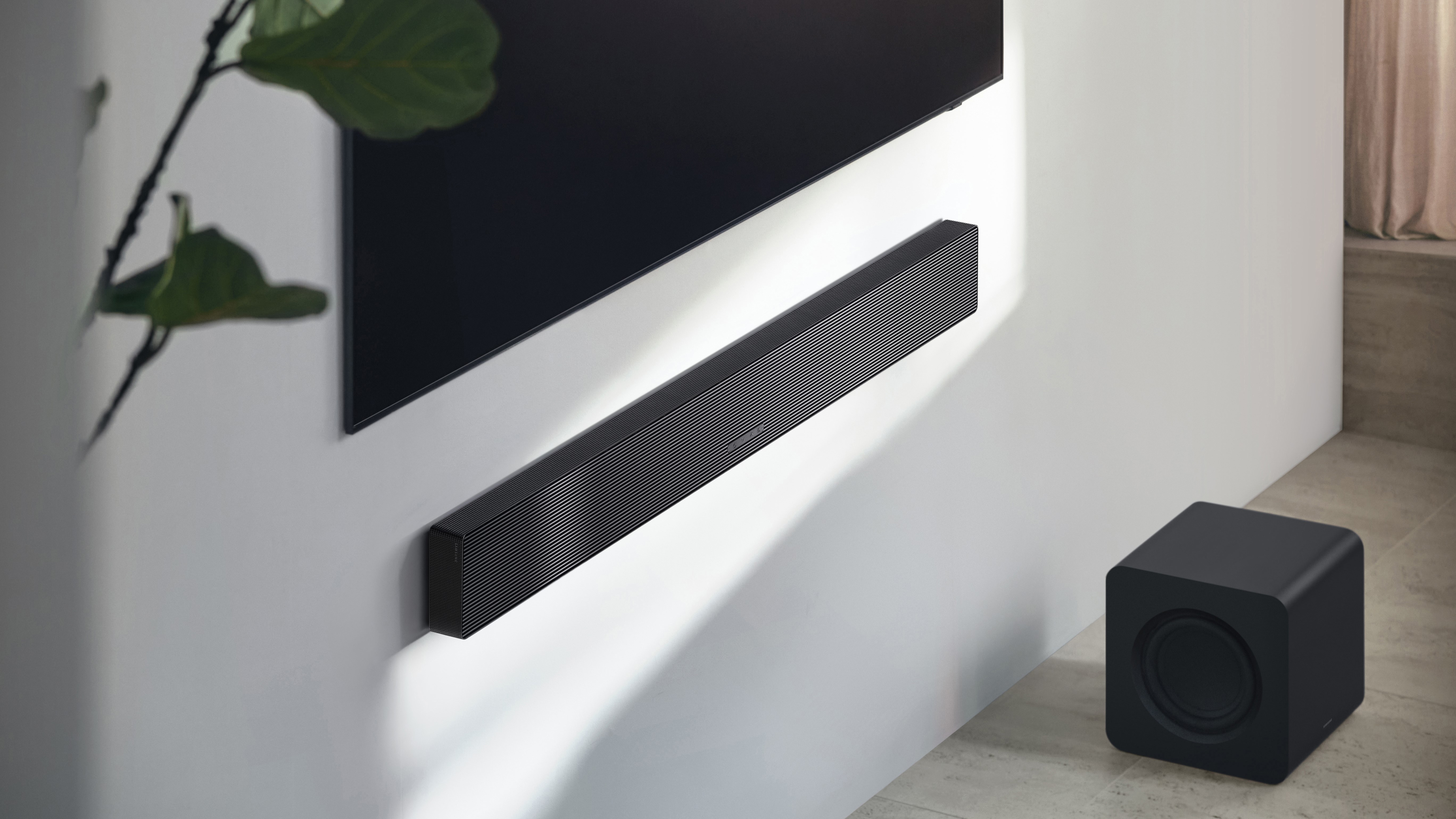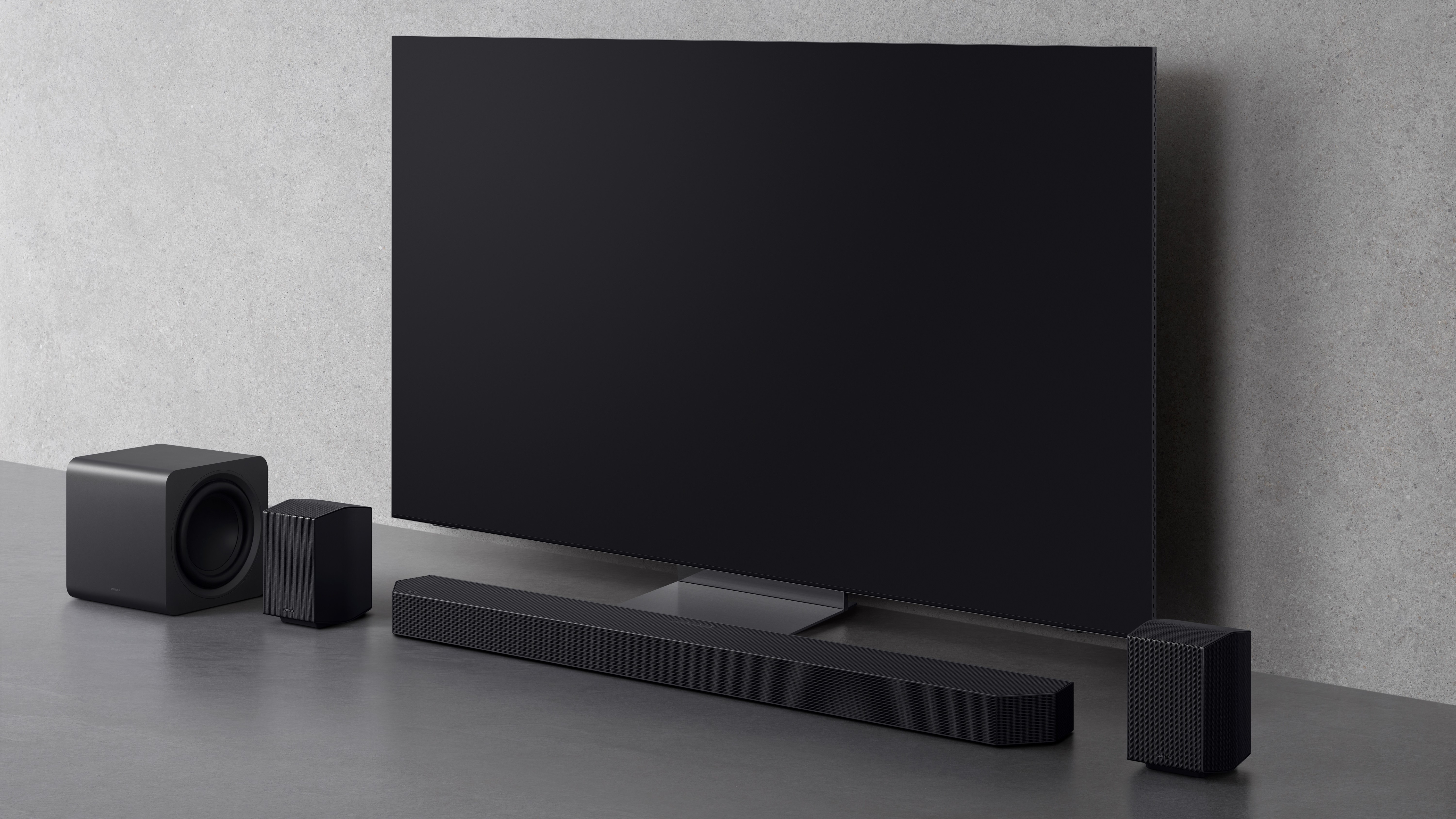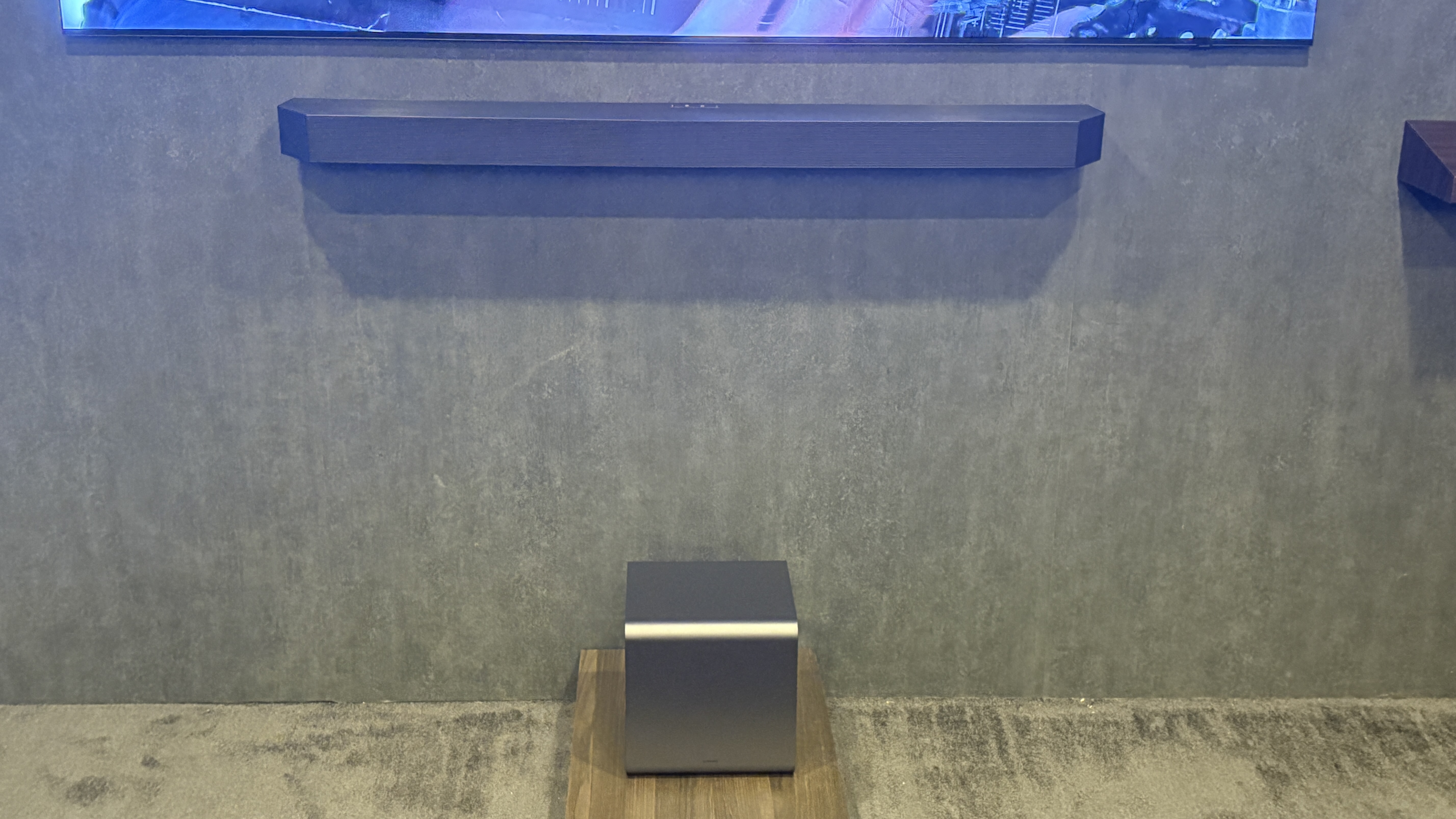Samsung HW-Q990F vs HW-QS700F: we compare the tech giant's 2 latest soundbars
It's Samsung vs Samsung in this battle of promising Dolby Atmos speaker packages. But which one deserves a spot under your TV?

Buying one of the best soundbars is a sure fire way to upgrade your TV’s built-in audio. And if you’re reading these words, chances are you’ve landed here after Googling “Samsung HW-Q990F vs HW-QS700F,” or something along those lines.
Unveiled at CES 2025, both models aim to tempt buyers with a combination of clever design, complimented by all manner of features and connectivity options – but which one deserves a spot in your living room?
Because Samsung has not sent review samples of either soundbar for testing, the below comparison is based on a combination of our in-depth expertise, our hands-on go with the Samsung Q990F, and the specifications and information available for both units at the time of writing.
This should be enough to give you a solid idea of which one might be the best choice for you, and we will, of course, update this feature once both units have been given the full What Hi-Fi? testing room treatment.
With that said, here’s how they stack up so far…
Samsung HW-Q990F vs HW-QS700F: price and availability
Samsung hasn't officially announced pricing for either model yet, though we can make some educated guesses based on previous releases.
The HW-Q990F's predecessor, the Samsung Q990D, launched at £1699 / $2000 / AU$2099, which gives us a reasonable indication of where the new flagship might be positioned. As for the QS700F, one of its predecessors – the QS700C – debuted at £599 / $549.99 / AU$899. The Q700D is, at the time of writing, on sale for £649 and AU$899 (currently reduced to AU$599).
Both models were unveiled at CES 2025, and while there’s no official release date information available at the time of writing, we know they’ll hit shelves at some point this year. We'll update this page when we get more information.
Samsung HW-Q990F vs HW-QS700F: design and build

The Q990F and QS700F represent two distinctly different approaches to soundbar design. The Q990F maintains the angular aesthetic of its predecessor, with a more complete system compared to the soundbar/sub combo of the QS700F – namely, a main soundbar unit, two wireless rear speakers, and a redesigned subwoofer.
Its new subwoofer measures 25 x 25 x 25cm, marking a dramatic reduction from its predecessor's sizeable footprint. This compact cube houses dual 8-inch opposing drivers, delivering 300W of power and reaching down to 32Hz, while taking up considerably less space than the previous model. Samsung has also added a refined serrated finish to help it blend more seamlessly into modern interiors.
The QS700F, meanwhile, introduces what Samsung calls a convertible design – a first for the company. Its most notable feature is the ability to function in two orientations – horizontally on a TV stand or vertically when wall-mounted. This versatility is achieved through a built-in gyroscope that automatically adjusts the sound output based on orientation. The QS700F also comes equipped with the same new subwoofer design as its flagship sibling, ensuring powerful bass performance regardless of the main unit's positioning.
Visually, the largest difference in the soundbars themselves is their shape. The Q990F opts for a rather aggressive, angular approach at the edges, while the QS700 opts for softer, rounded corners and a more pared-back design. Both look good in our eyes, though design is, of course, subjective.
Samsung HW-Q990F vs HW-QS700F: features and connectivity

The Q990F maintains its position as Samsung's premium offering, with several new enhancements. Its 11.1.4-channel system now incorporates an enhanced version of Q-Symphony Pro, which can utilise a compatible Samsung TV's Neural Processing Unit for improved audio processing and dialogue enhancement. The system also introduces Active Voice Amplifier Pro for real-time content analysis and Dynamic Bass Control, which employs non-linear bass management for more precise low-frequency output.
Both soundbars support Dolby Atmos and DTS:X, and are among the first devices to feature Eclipsa Audio – Samsung and Google's new spatial audio technology. This new format enables content creators to adjust sound data and location for spatial audio, with YouTube support planned for later in the year. The QS700F also includes up-firing drivers for Dolby Atmos effects, though its complete channel configuration hasn't been disclosed. Its aforementioned built-in gyroscope also allows it to adjust its sound output depending on its orientation.
Elsewhere, Samsung's SpaceFit calibration system (which continuously monitors and optimises sound output) is available on both units, but the Q990F takes integration a step further, now supporting connections with up to three additional wireless speakers beyond its included rear surrounds – an increase from the previous model's two-speaker limit. This expanded connectivity includes compatibility with Samsung's Music Frame speakers as well.
Both soundbars offer HDMI eARC and digital optical inputs, and while we don’t have the full specs for the QS700F as of yet, the Q990F is confirmed to support refresh rates up to 165Hz, along with Variable Refresh Rate and Auto Low Latency Mode through its HDMI passthrough. Both models also include Bluetooth and Wi-Fi connectivity, with support for Samsung's SmartThings ecosystem for streamlined multi-room audio configuration. The Q990F also features Roon Ready certification, making it particularly appealing for users with high-end streaming setups.
Samsung HW-Q990F vs HW-QS700F: sound

Our brief hands-on time with the Q990F at CES revealed promising performance from its new compact subwoofer. Despite the significant size reduction from its predecessor’s sub, it delivered punchy yet controlled bass. The overall system appeared to maintain the engaging, dynamic character of last year’s model, with the complete speaker array creating an enveloping soundstage. However, proper evaluation will require testing in our review rooms away from the noisy show floor environment.
The QS700F's sonic capabilities remain to be tested. While we know it supports Dolby Atmos and includes up-firing drivers, we'll need thorough testing to evaluate how effectively its adaptive orientation system handles different mounting positions, as well as how it performs against similarly priced rivals.
Samsung HW-Q990F vs HW-QS700F: early verdict
While definitive judgements await our full review process, both soundbars show promise in different ways. The Q990F appears to be a thoughtful evolution of its predecessor, maintaining comprehensive features while addressing the previous model's subwoofer bulk. The QS700F, meanwhile, brings seemingly practical innovation with its adaptable design, though its real-world performance remains to be thoroughly tested.
We'll need to spend time with both units to evaluate their overall performance, particularly focusing on the Q990F's enhanced AI features and the QS700F's orientation-adaptive system. We'll also be keen to assess how the new Eclipsa Audio format performs against established standards like Dolby Atmos. Check back for our full reviews, where we'll deliver comprehensive verdicts on both models.
MORE:
Read our full Samsung HW-Q990D review
Also consider the Sonos Arc Ultra
Best Dolby Atmos soundbars: our expert picks
Get the What Hi-Fi? Newsletter
The latest hi-fi, home cinema and tech news, reviews, buying advice and deals, direct to your inbox.

